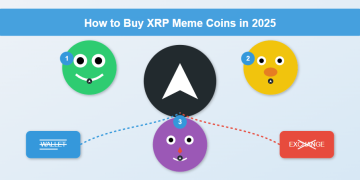7 Reasons to Start Your Next App with a React Native Expo Boilerplate
Starting a new mobile app project can be exciting—but also overwhelming. Between setting up the environment, picking libraries, and managing native dependencies, even experienced developers can burn days before writing a single meaningful feature. That’s where a well-crafted React Native Expo boilerplate changes everything. Instead of starting from scratch, you’re handed a clean, scalable, production-ready foundation that gets out of your way and lets you focus on building.
Here’s why more developers are choosing Expo boilerplates to kickstart their mobile app builds:
1. Instant Project Kickoff
Forget spending the first week configuring TypeScript, navigation, theming, and auth. A great React Native Expo boilerplate does that for you. You clone, run one command, and you’re ready to code.
These boilerplates come with everything pre-wired: React Navigation, gesture handling, screen templates, and even a folder structure that makes sense. It’s not just convenient—it’s momentum from day one.
2. Consistent Architecture from Day One
Spaghetti code happens when structure is an afterthought. With a boilerplate, you start with clean separation of concerns—screens, components, hooks, services. That consistency makes collaboration easier and keeps technical debt from piling up later.
A boilerplate offers scalable conventions without locking you into rigid rules. Whether you’re planning a simple MVP or a complex multi-feature product, having strong architecture baked in sets the tone for long-term maintainability.
3. Expo Handles the Heavy Lifting
Expo has come a long way. It supports native modules, custom development clients, and production-grade builds—without needing Xcode or Android Studio out of the gate. A good Expo boilerplate leverages these strengths.
You get fast refresh, over-the-air updates, easy push notifications, and simplified deployment workflows. That’s more time building your product—and less time buried in native build hell.
4. Perfect for Teams and Solo Devs
Whether you’re part of a startup team or a solo indie dev, using a React Native Expo boilerplate levels the playing field. Teams benefit from shared conventions and a common foundation. Solo devs benefit from speed and clarity.
You don’t need to reinvent onboarding or build tooling from scratch. Everything’s pre-integrated, so anyone on the team can jump in and be productive instantly.
5. Easier Maintenance and Scaling
As your app grows, so do the challenges. Managing assets, handling environment variables, integrating analytics, or scaling navigation trees can get messy—unless you start with a structure that anticipates it.
Expo boilerplates often come with solutions for things like localisation, state management, and analytics integration already scaffolded. That foresight makes it easier to scale your codebase cleanly.
6. You Focus on Features, Not Fixes
No more Googling for hours to fix some obscure Metro bundler error. No more battling outdated dependencies. With a modern boilerplate, you sidestep all of that.
That saved time and reduced frustration translates into real business value. You spend your energy building things users care about—onboarding flows, animations, integrations—instead of babysitting your setup.
7. It’s Future-Proof and Community-Backed
The best React Native Expo boilerplates evolve with the ecosystem. They adopt new Expo SDKs, follow latest best practices, and are supported by active dev communities.
That means you’re never stuck with a stale stack. You benefit from updates, performance optimisations, and ecosystem improvements—without rewriting your entire codebase.
The Bottom Line: A solid React Native Expo boilerplate isn’t just a time-saver—it’s a launchpad. It gives you clean code, better DX, and confidence to scale. Whether you’re building fast or building smart, it’s one of the best tools in your mobile dev toolbox.









